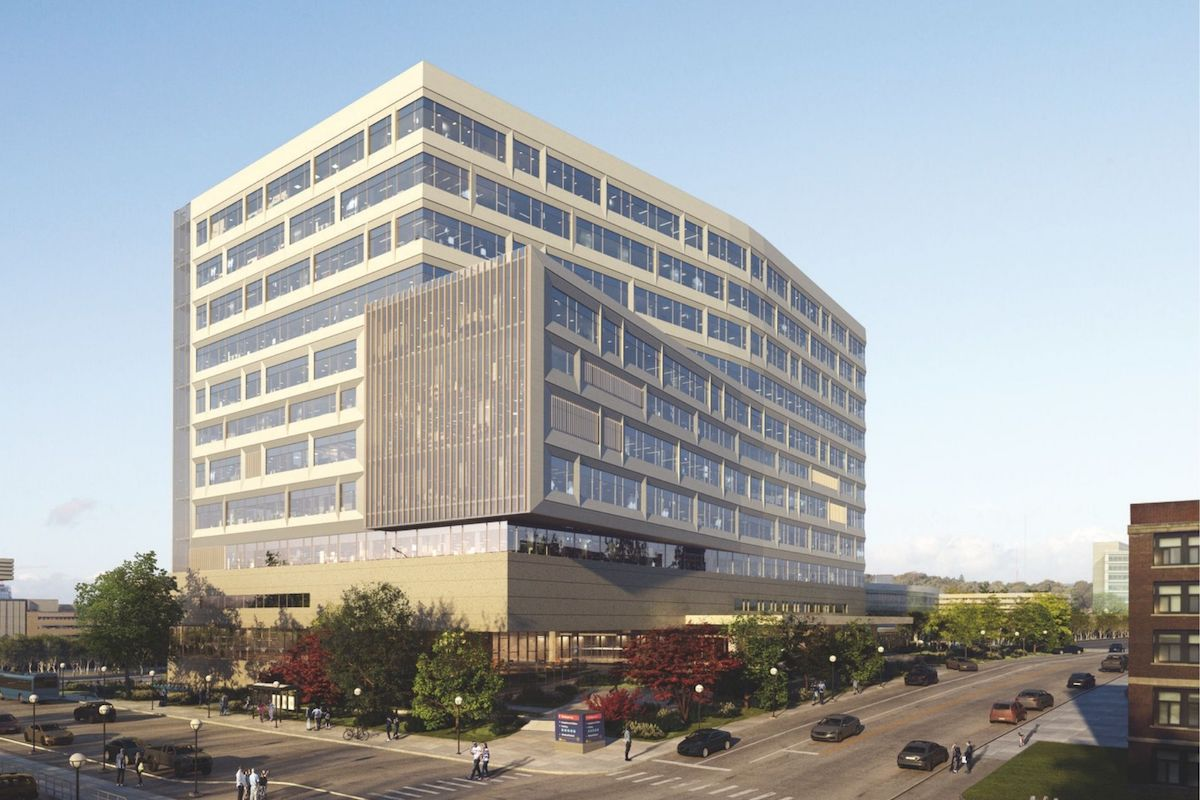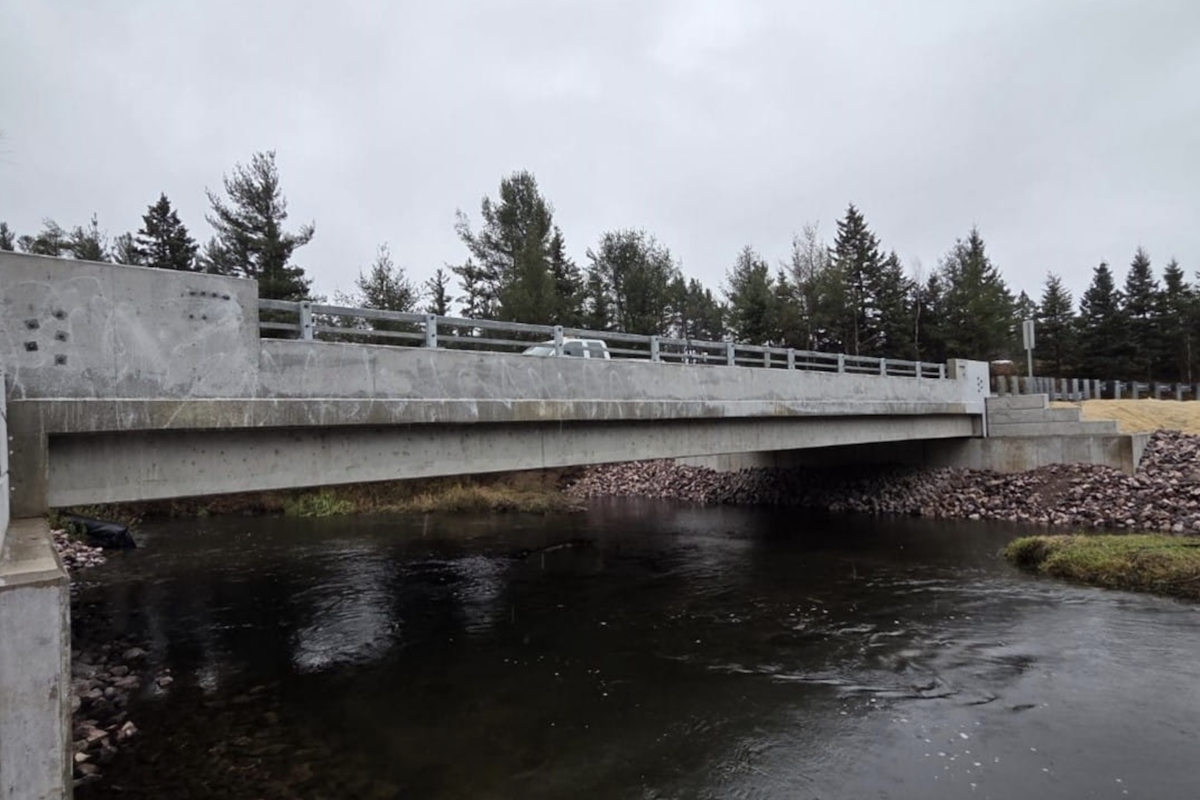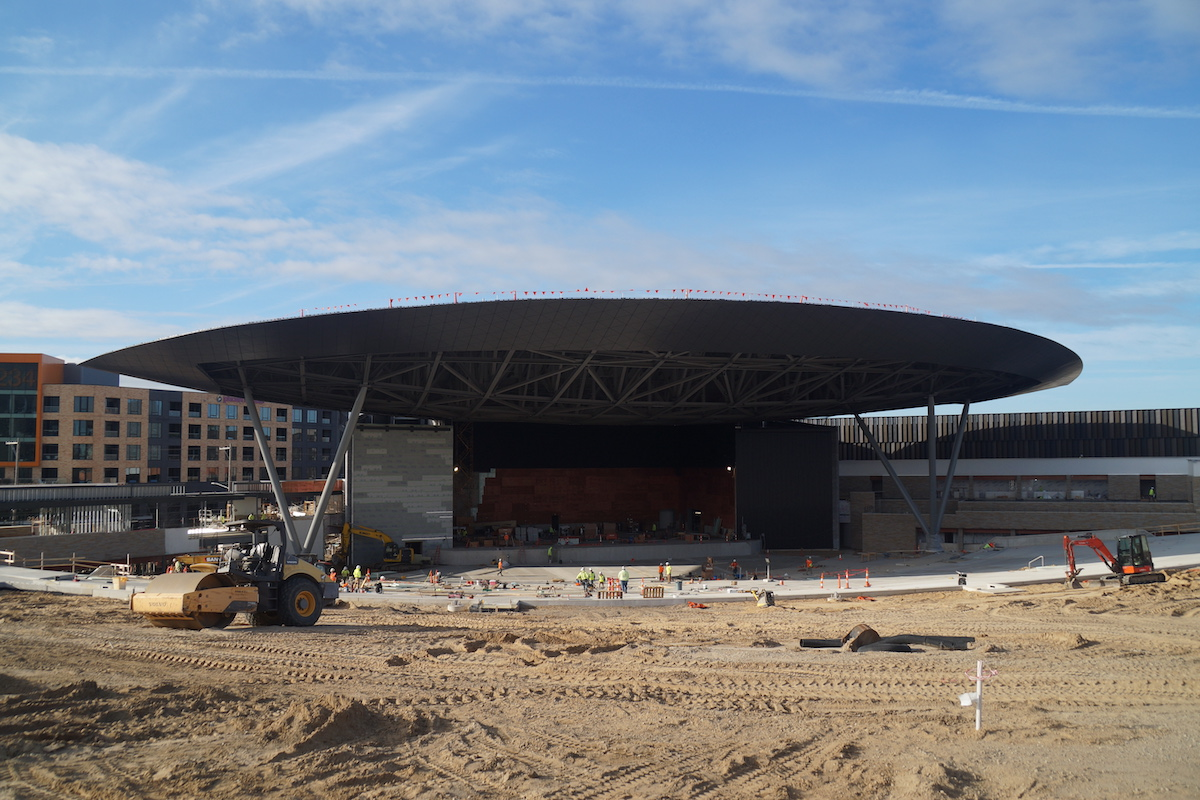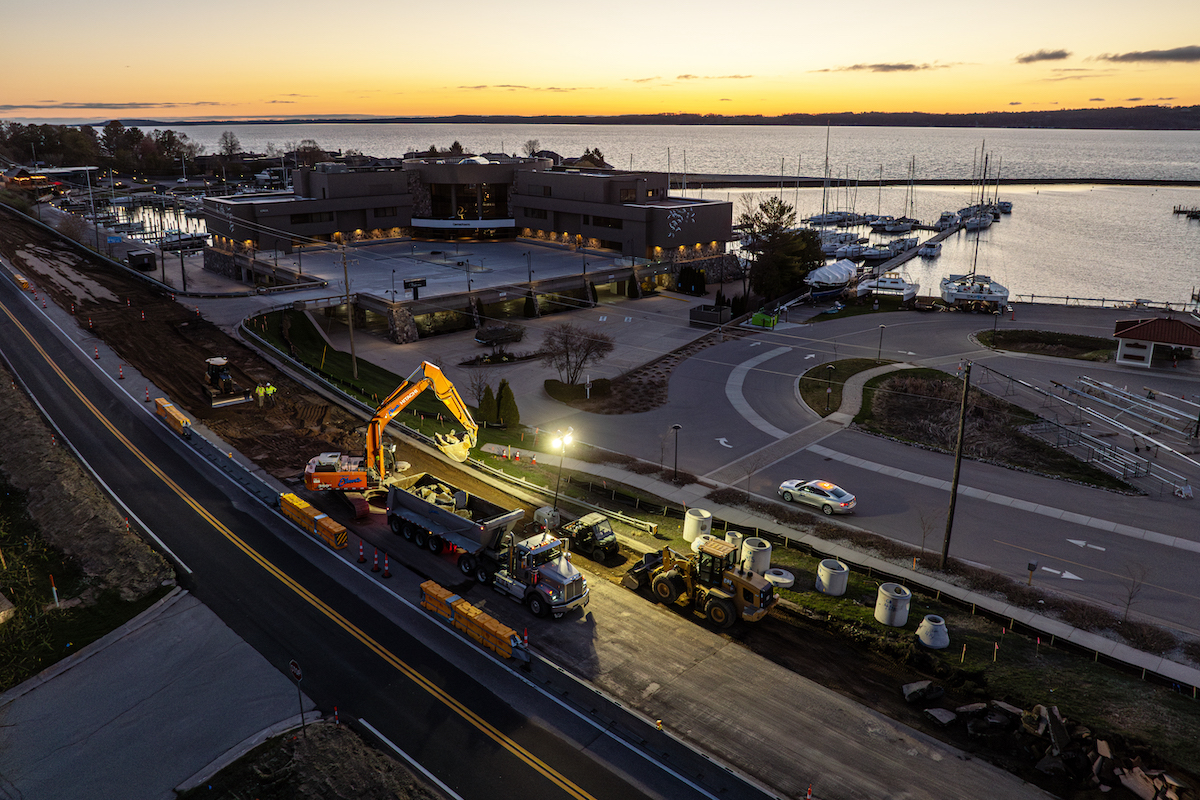“It was neat to be a part of a project not everybody sees, because treatment plants are built underground,” says BJ Peterson, Vice President of Operations at McCarthy Building Companies of Overland Park, Kansas, the construction manager for the project. “But this project will have an impact on the community for the next 40-plus years.”
The county had shifted about 60 percent of the flow to Kansas City, Missouri, but consistent rate increases from Kansas City, Missouri, and stricter Environmental Protection Agency and Kansas Department of Health and Environment discharge limits prompted Johnson County Wastewater to expand and upgrade the Tomahawk Creek facility.
The project aimed to provide a cost-effective, long-term solution for customers and improve water quality. The county estimates the new plant will save $785 million over the next 35 years.
The new plant serves about 150,000 residents and has the capacity to treat wet and dry weather flows from 19 million gallons per day (MGD) to 172 MGD. The county issued bonds to fund the project.

| Your local Deere & Co dealer |
|---|
| AIS Construction Equipment |
“The toughest technical and complicated sequenced projects benefit from collaborative delivery,” Peterson says. “Everyone on the project team has a personal investment in working together. If you can bring the key stakeholders to the table as early as possible in the project, it results in better collaboration and better results for the client.”
McCarthy provided cost estimates at different design milestones. Consequently, the project team could make adjustments to keep the project within budget.
“It’s a collaborative model,” Peterson explains. “We bring the experts to the table to provide solutions to make sure the project was successful and within budget.”
“We diverted all of the wastewater flows to Missouri during construction so that we could build the new plant as quickly as possible” Peterson says.
Most of the old facility had reached its useful life or facilities were not sized properly for current standards and future flows. Crews demolished the existing structures, except for the Influent Pump Station, which collects raw wastewater, and the Digester Complex. Site work included grading and drainage, underground piping and site roads.

| Your local Trimble Construction Division dealer |
|---|
| SITECH Michigan |
The footprint for the new facility is about 30 percent greater than the former plant and included construction of 30 structures – primarily large, deep concrete underground basins. McCarthy worked on all of the structures simultaneously.
“We established a collaborative team early on in the preconstruction and design phase, which helped us manage risks through 2019 – the wettest year on record – and through a pandemic,” Peterson says. “Bringing the CMAR on early kept the project on schedule and on budget.”
Crews placed 792 deep foundation drilled shafts to support the structures. A limestone shelf exists about 5 to 10 feet underground through the middle of the site. That required crews to bridge the foundation with piers down to bedrock for structures on the northern portion of the site. Those structures on the southern half of the parcel were supported directly on the rock.
Crews used three tower cranes during construction of the structures to hoist concrete, rebar and other materials into place. The project consumed 50,000 cubic yards of concrete.
Castle Contracting, a McCarthy subsidiary in St. Louis, self-performed the concrete work. “Once we hit the limit of the labor we could source locally, we could resource our labor nationally,” says Peterson. “It was the best way to keep the project on schedule.”

| Your local Deere & Co dealer |
|---|
| AIS Construction Equipment |
Other structures support plant operations including blowers, a control center, and mechanical and filtering facilities. Crews placed 9 miles of underground utilities and installed 130 pumps. “It was quite the effort to coordinate the right layout,” Peterson recalls.
Due to the increase in water flow the plant will treat, electrical demand grew. Crews added an onsite substation powered by existing Evergy transmission lines.
“It provides electrical redundancy,” Peterson says. Additionally, “every structure has stand-by equipment. If one were to fail, there is a backup system so it can keep on running.”
The site rests within a floodplain, so McCarthy brought the site higher and it no longer is in that flood zone. To do so required hauling in dirt and redistributing soils excavated for the underground structures.
To mitigate flooding issues, crews also built an earthen channel to provide a relief zone on site during rain events. Crews also built a bike path with landscaping on the north side of the site.

| Your local Deere & Co dealer |
|---|
| AIS Construction Equipment |
McCarthy used various technologies on the project, including a drone to provide real-time coordination photos. “That was super beneficial to be able to see from a bird’s eye view the construction progress on a weekly basis,” Peterson says. “That was something the owner appreciated.”
The company also employed XS10 scanning technology for accurate layout and as-built; building information modeling technology for the entire plant to facilitate construction coordination, eliminate conflicts, and enhance quality; and GPS-enabled equipment for precise excavations with proper sloping and location.
The new plant uses a five-stage biological nutrient removal process. This secondary treatment uses bacteria to break down and reduce organic matter. The basins are split into different zones with varying concentrations of oxygen and other nutrients. The biological nutrient removal works with the final clarifiers.
Although the county anticipates the new facility will be able to handle future flows, it will retain a large pipe to the Kansas City facility. The new wastewater treatment plant will serve its community for years to come.
“We are the special agents behind the scenes that are making sure America keeps running by building sustainable water and wastewater treatment infrastructure for communities,” Peterson concludes.

| Your local Deere & Co dealer |
|---|
| AIS Construction Equipment |
Photos courtesy of McCarthy Building Companies






































































